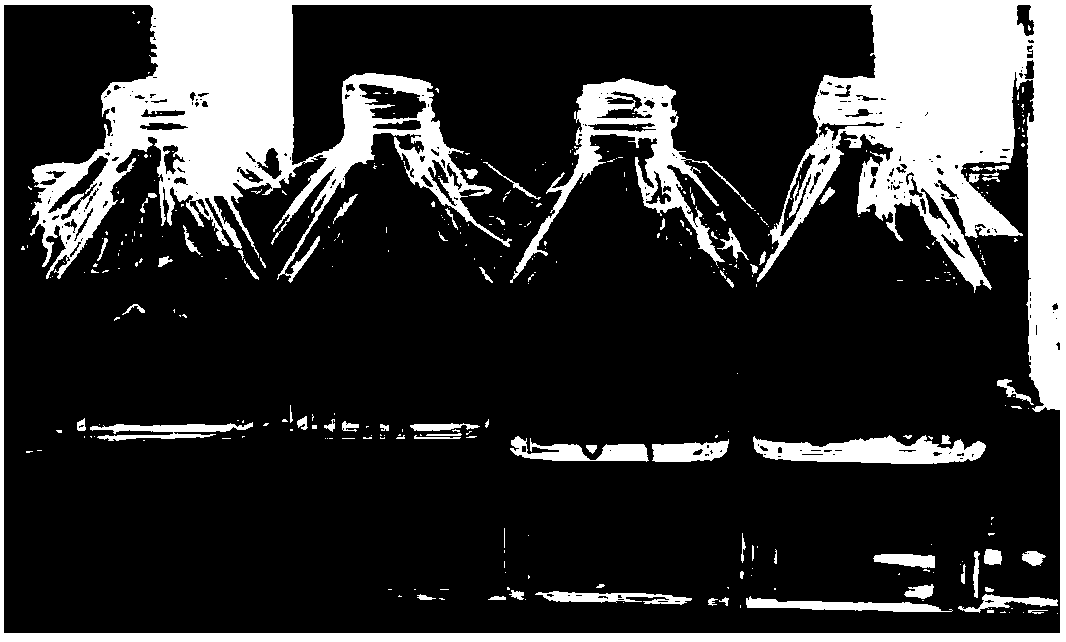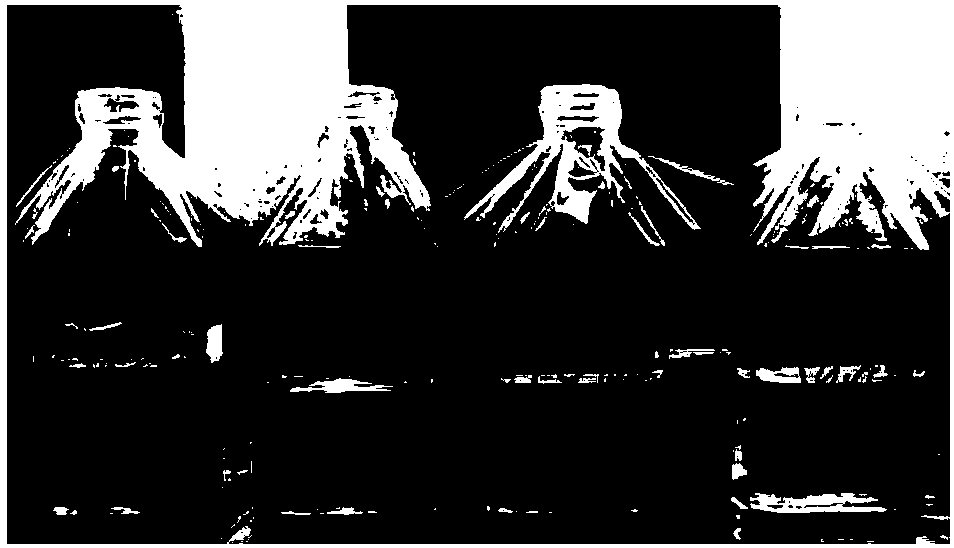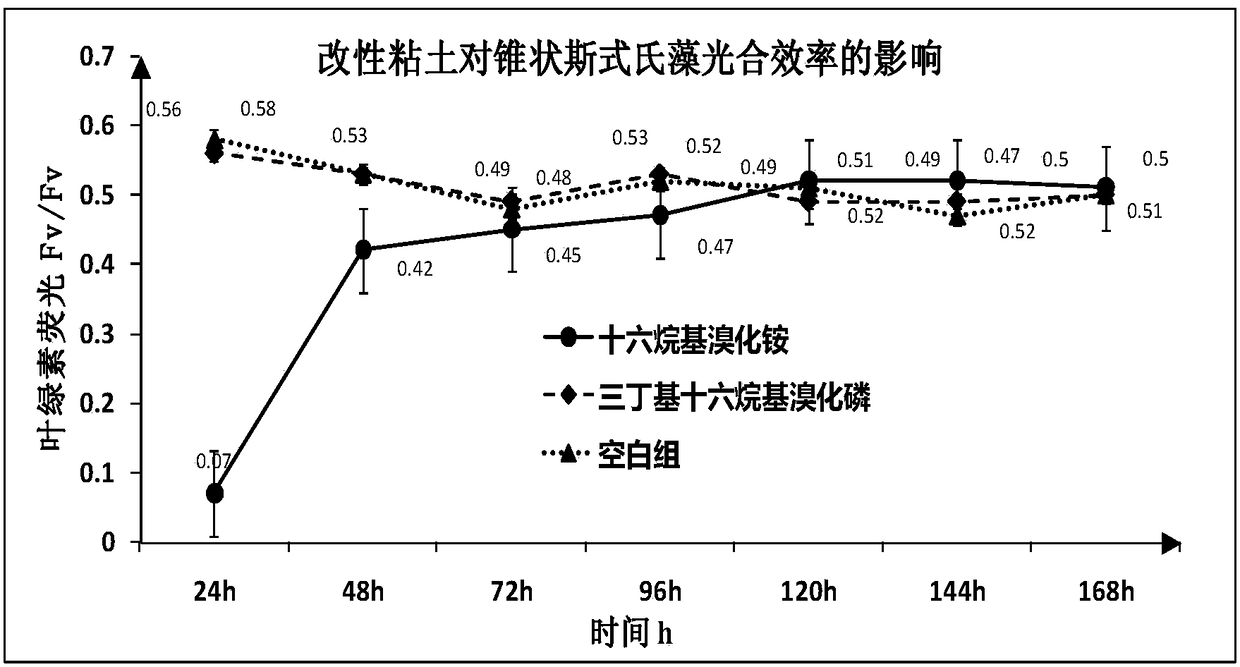Method for inhibiting algae growth by coupling modified clay with algal inhibition bacteria
An algae and clay technology, applied in the directions of microorganism-based methods, biochemical equipment and methods, chemical instruments and methods, etc., can solve the problems of a large amount of algae-lysing bacteria and difficult to meet the actual environmental governance, etc. Prepare simple effects
- Summary
- Abstract
- Description
- Claims
- Application Information
AI Technical Summary
Problems solved by technology
Method used
Image
Examples
preparation example Construction
[0048] The preparation method of modified clay: take 100mg of the above two modifiers, add 10mL of 1% dilute hydrochloric acid solution, stir or shake to dissolve the modifier, and then add 100mL of filtered seawater to obtain 1mg / mL modifier hydrochloric acid Solution, then weigh 1g of sodium montmorillonite, and add 100mL of modifying agent hydrochloric acid solution while stirring to configure the modified clay.
[0049] Isolation and Screening of strains The samples were from algae symbiotic microorganisms, which were cultivated by Shenzhen Graduate School of Tsinghua University. The strain cultivation method used LB medium. The algae microbes came from the red tide samples that broke out in Tung Chung, Shenzhen.
[0050] LB solid medium: tryptone 10g, yeast extract 5g, sodium chloride 10g, deionized water 1000ml, agar powder 15g, pH7.0.
[0051] LB liquid medium: tryptone 10g, yeast extract 5g, sodium chloride 10g, deionized water 1000ml, pH7.0.
[0052] Solid LB cultur...
example 1
[0054] Example 1, the selection of tested algae species
[0055] In the present invention, we have selected the red tide algae that is common in the sea areas of Guangdong --- Scrippsiella trochoidea (Scrippsiella trochoidea, cell pear shape, 16-36 μm long, 20-23 μm wide), which belongs to dinoflagellates and is widely distributed in Near shore and estuaries, explosive proliferation can cause local hypoxia in water bodies, bringing harm to marine organisms and aquaculture. From 2010 to the present, red tides of different scales have occurred in the coast of Guangdong for seven consecutive years, and it has become a high-frequency species of red tides. Taking August 12th to August 30th, 2013 as an example, a large-scale red tide of Steinerella conicum occurred in the area of Baguang and Dongchong-Yantian Port in Shenzhen, which lasted for 19 days and had a maximum area of 15 square kilometers. Therefore, the tested species selected in this invention is Steineria coniformis...
example 2
[0056] Example 2, the preparation of modified clay
[0057] After comparing several clay types reported in the literature, we chose sodium montmorillonite. Montmorillonite is a three-layer structure clay mineral. Due to its lattice defects and surface hydroxyl structure, the surface of this particle is negatively charged in water, but it can be prepared by chelating with sodium ions. Adsorptive power of cationic clay.
[0058] As modifiers, high-efficiency and low-toxic high-alkyl compounds are selected. Different types of modifiers have a great influence on the effect of clay modification. We choose two modifiers with lower toxicity: hexadecyl three Two modifiers, methyl ammonium bromide and tributyl hexadecyl phosphonium bromide.
[0059] Preparation of modified clay: Take 100mg of modifier, add 10mL of 1% dilute hydrochloric acid solution, stir or oscillate to dissolve the modifier, then add 100mL of filtered seawater to obtain 1mg / mL modifier hydrochloric acid solution, ...
PUM
 Login to View More
Login to View More Abstract
Description
Claims
Application Information
 Login to View More
Login to View More - R&D Engineer
- R&D Manager
- IP Professional
- Industry Leading Data Capabilities
- Powerful AI technology
- Patent DNA Extraction
Browse by: Latest US Patents, China's latest patents, Technical Efficacy Thesaurus, Application Domain, Technology Topic, Popular Technical Reports.
© 2024 PatSnap. All rights reserved.Legal|Privacy policy|Modern Slavery Act Transparency Statement|Sitemap|About US| Contact US: help@patsnap.com










